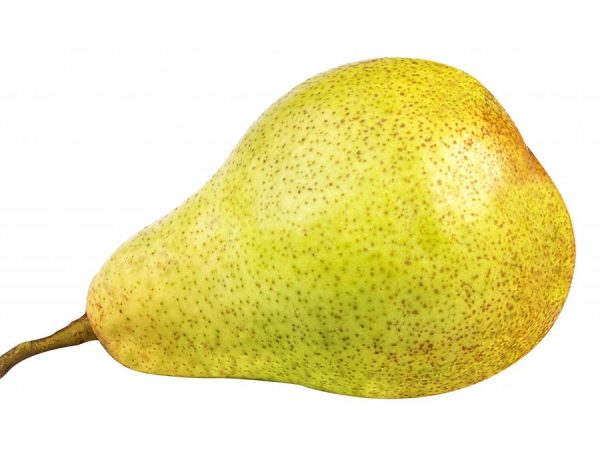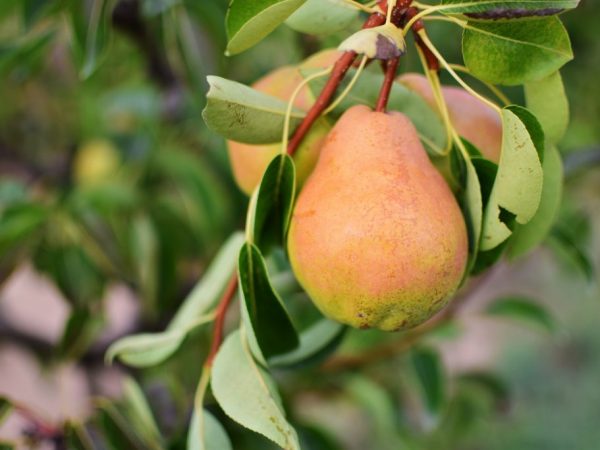Description of pear Kupava
Pear Kupava is a high-quality variety characterized by disease resistance, temperature extremes and excellent yield levels. Minimal maintenance is required.

Description of pear Kupava
Variety characteristic
The Kupava pear variety was bred in Russia in 1970. After 2 years, it was entered into the State Register of the country. It is grown in all regions of the country without the danger of losing crops.
Description of the tree
According to the description, the Kupava pear tree is compact. Its height rarely exceeds 5 m. The dense crown is oval. The branches are located at an acute angle in relation to the central stem. Thin brown shoots. The leaves are round, smooth, with a medium plate. The Kupava pear variety belongs to early crops, is self-fertile, so it is not necessary to plant pollinators next to it.
Description of the fetus
- cylindrical shape, compact;
- weight about 100 g;
- length about 13 cm;
- the surface is covered with frequent small bumps;
- the golden rind is covered with a waxy coating;
- spots on the peel are common;
- 20% of the area of the fruit is covered with a reddish blush.
Taste and use
Taste quality at a high level. The taste is sweet, with a slight acidic note. The amount of sugar reaches 12%. The composition contains ascorbic acid in an amount of 10 mg per 100 g.
High commercial quality allows you to grow crops for sale. The possibility of using it for the preparation of compotes or jam is noted. The variety is ideal for fresh consumption.
Planting a tree
For planting in the spring, choose only high-quality soil.
- it must be loamy or black earth;
- groundwater should not be located near the root system;
- there should be enough sunlight.
The diameter of the pit for planting should be about 50 cm. The depth is at least 100 cm. To prepare the soil for planting, 10 liters of limestone solution (200 g per 10 liters of water) are poured into the hole. After this procedure, the seedling cannot be planted for another 10-15 days. The soil obtained after digging the hole is mixed with 2 kg of humus and 2 kg of sand. The roots of the seedling are poured with the resulting mixture, having previously distributed them over the entire section of the pit. After that, the soil is thoroughly tamped and 10 liters of water are poured in. The culture is planted so that 1 sq. m there were no more than 4 plants.
Care features

Harvest only with proper watering
Caring for the Kupava pear variety consists in high-quality watering. It is held every 2 weeks. 10-20 liters of water is poured under each tree, depending on the climatic conditions of the region. 3-5 days after watering, the soil is weeded to a depth of 10 cm and all emerging weeds are removed.
The first feeding is carried out the next year after planting. Better to hold it in early March. At this moment, 5 liters of superphosphate solution (40 mg of the drug per 10 liters of water) is introduced under the bush. In June, the plant is watered with a solution of potassium nitrate (40 mg per 10 liters of water). For 1 sq. m should account for 20 liters.For those living in a cool region in the fall, it is important to mulch the soil (mix 2 kg of straw with 2 kg of humus). This will protect the roots from frost.
The plant is tied to a support. The garter is carried out as the bush develops. At the end of March, damaged branches are removed, and in the fall it is important to thin out the crown in order to increase the yield for the next year.
Diseases and pests
This species is resistant to scab and powdery mildew, but can be subject to root rot and bacteriosis. It is impossible to fight root rot and bacteriosis, so it is better to follow the care rules to avoid such situations: they normalize watering, remove weeds, and thoroughly weed the topsoil.
A common pest is the moth. They fight it by spraying with copper sulfate (20 mg per 10 liters of water).
Conclusion
The Kupava pear is grown everywhere, it is considered one of the best varieties among pear crops. To obtain the expected yield, you should plant the seedling correctly and adhere to standard, simple care rules.


